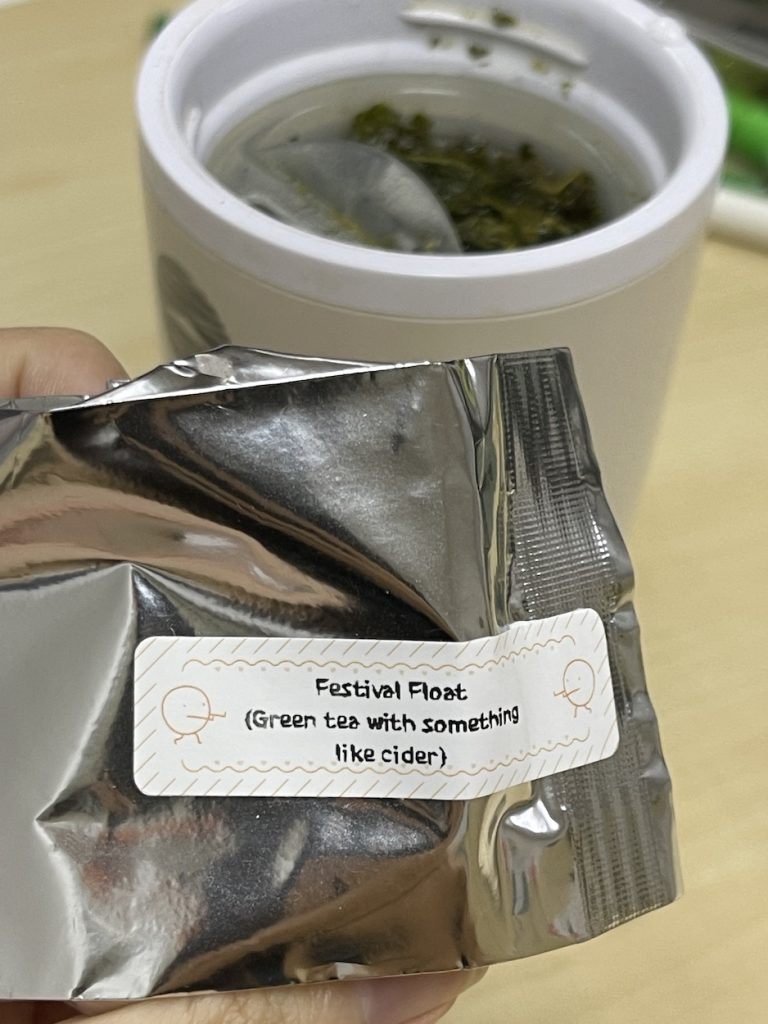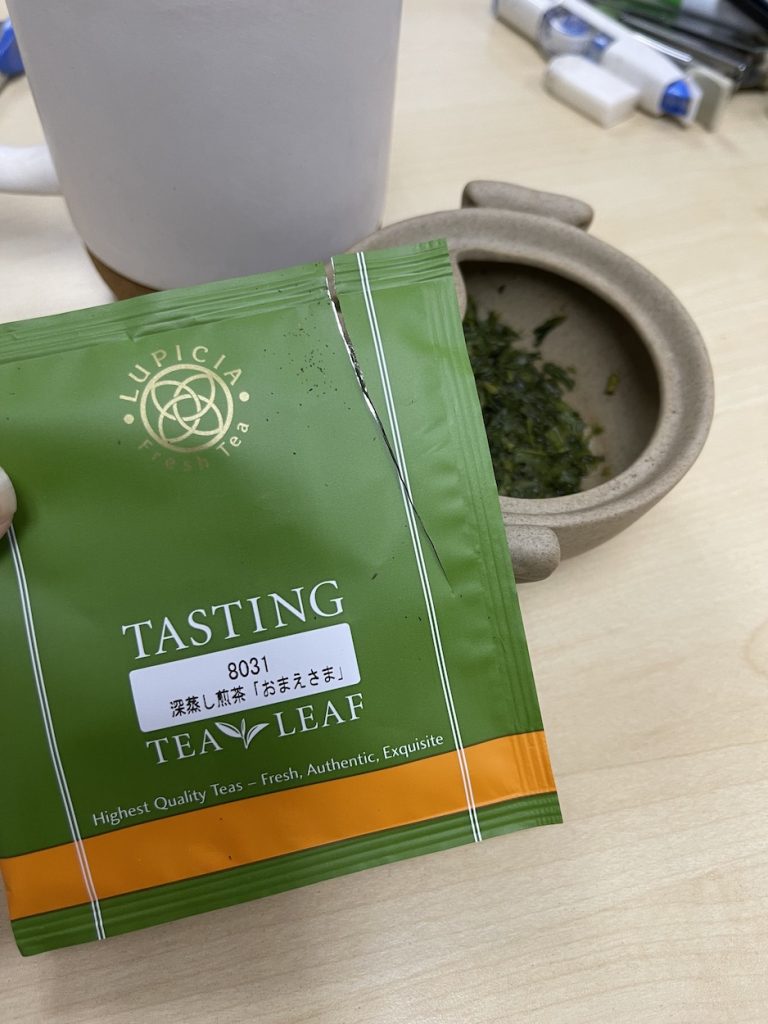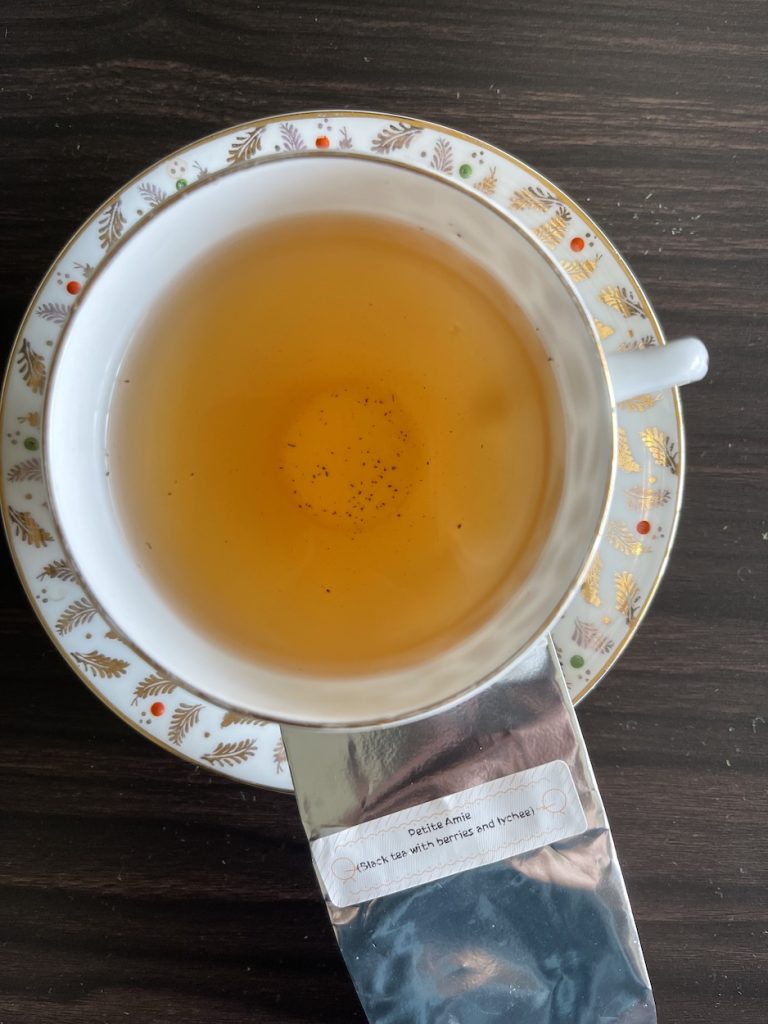After three months, I am back with more quick tea reviews! Ethel and I finally had time to meet and she passed me alllll the Lupicia teas that I’ve been missing. Since I started caring less about the aesthetics of drinking tea (which is probably because I stopped taking pictures for IG), I brought my teas to work and have been enjoying them as a little treat during the work day.
This also means there are fewer pictures because after the first two or three, I realised there wasn’t much point in taking a picture of the packet!
Let’s start with the Karuizawa Blueberry and Darjeeling, which had a strong fruity taste but also a bit of a ‘musty’ note. I wondered if it’s because of the flavourings because I’m fairly sure I’ve seen this before – not sure if it’s flavourings which are stale or a water temperature issue. If I ignore the musty note, though, it’s a pretty nice light tea.

The Festival Float was a green tea flavoured with soda. At first, I thought I got a floral note, but then the soda note became very noticiable. I was a bit unsure about the flavour combination at first because soda and green tea don’t naturally mix for me, but I ended up enjoying this!

Omaesama/おまえさま is a 深蒸し煎茶 (fukamushi sencha). It smells very rich and marvellous. There is a strong grassy note and it’s quite sweet with a slight roasted seaweed note. I found this to be a very tasty, rich tea that actually brewed well despite the fact that I used the office water cooler! It’s a very smooth tea with no bitterness or astringency. I’m actually considering getting more of this if I ever see it in store.

For a change, I had the Petite Ami at home. It smells of berries but tastes quite strongly of lychee, which is interesting. I liked this tea because the notes felt pretty natural but there was also not much to say about this – it did what I expected.
The last tea for today’s post is the Yokohama no Machi, which is a sencha with apricot and coconut. The dry leaves have a very sweet and familiar smell which I think it’s the apricot. Surprisingly, I can taste the sencha first, followed by the apricot note. The coconut note is quite subtle and appears more as an aftertaste (though after a while I can smell it too). While I prefer this without coconut, I can see how all three flavours work together in harmony. This became one of my favourites out of these five because all the notes worked together really well.
So there you have it! Five teas for my fifth quick tea review. I’m actually really close to finishing the next post for my quick tea reviews for Chinese tea, so stay tuned for that next week!
